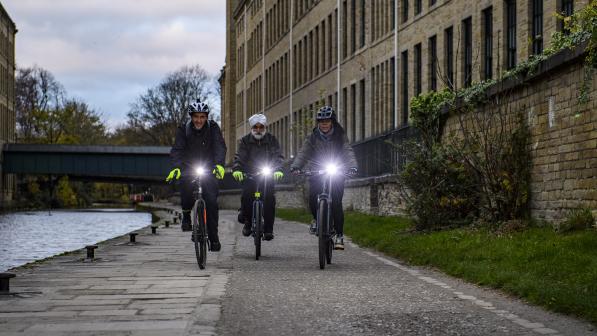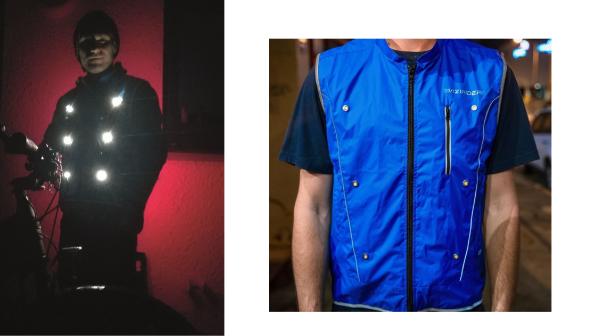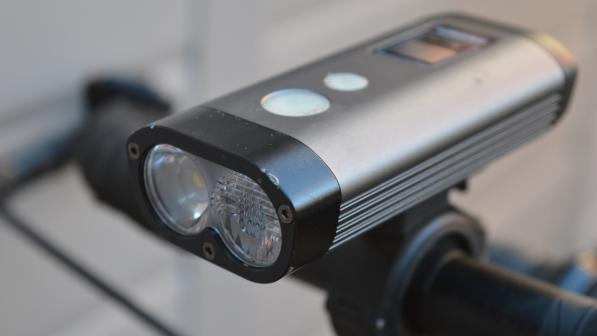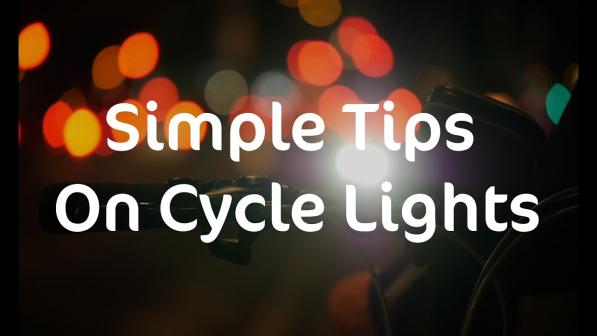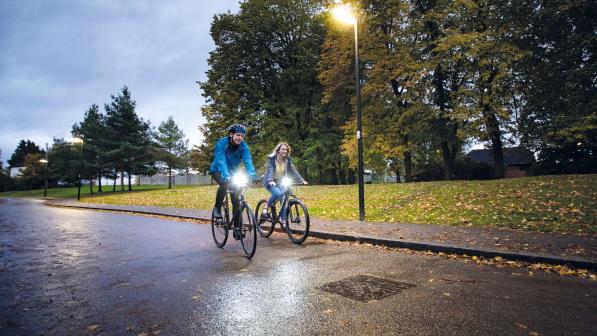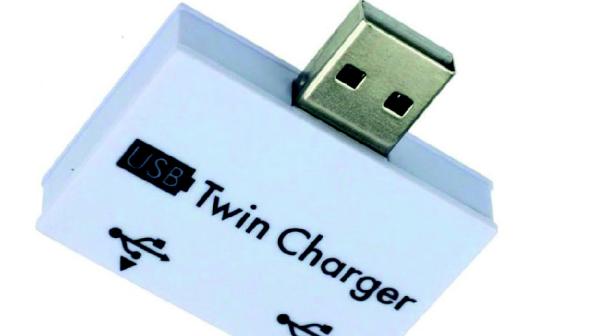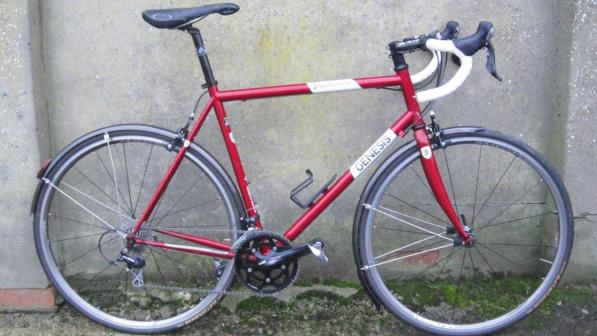Group test: battery rear lights

Along with a white front light, red rear reflector and amber pedal reflectors, a red rear light is a legal requirement when riding at night. Before 1989, your lights merely had to be “visible from a reasonable distance”. That standard remains good enough for the police. But not the letter of the law.
UK lighting regulations require that your lights meet BS6102/3 or (even as we are about to leave the EU) an equivalent standard from an EC country, such as Germany’s StVZO. Most don’t, despite their brilliance. So unless you buy your lights from a German online retailer, you’ll probably be breaking our outdated lighting laws.
Should you worry? Not really; the police don’t. But it’s a theoretical line of attack for a SMIDSY driver’s weaselly solicitor.
Rear lights have longer burn times than front lights because they don’t need be powerful enough to cast a beam. That makes disposable batteries economically viable, especially for occasional use.
Rechargeable AAs or AAAs will nevertheless save you money over disposables in the long term and they’re much more environmentally friendly. Many lights come with an integral, rechargeable Li-ion battery.
The best position for a battery rear light is arguably on a mounting plate on a rear pannier rack, where it won’t be obscured by luggage or clothing. And because it’s bolted in place you can’t forget it, don’t have to waste time fitting it for each journey, and don’t need to worry about casual theft when parked.
But not all bikes have rear racks. Besides, we’ve already reviewed rack-fitting rear lights. So for this test I’m reviewing lights that fit elsewhere. There are loads to choose from. I’ve cherry-picked four good ones.
Busch + Müller Secula Permanent Mudguard Mounted

There’s a version of the battery-powered Secula that cable-ties to a seatpost or seatstay. This mudguard-mounted model is more resistant to casual theft. It bolts to a rear mudguard where a reflector would fit; you’ll need to bore two small holes if your mudguard doesn’t have them. Decent mudguard-to-tyre clearance – 10mm or more – is required to prevent the attachment bolt from rubbing the tyre.
The Secula runs for about 20 hours on two AAA batteries. Disposables are supplied but it works fine with rechargeables, and there’s a low battery warning.
There’s only one light mode: steady. This simplifies usage and saves time since you can’t accidentally turn it to a strobing or flashing mode you don’t want. It’s on or it’s off. The Secula uses a single high-powered LED that illuminates a highly visible ‘LineTec’ halo.
While no lumens figure is quoted, the light sensor on my camera indicates that, with the lights in steady mode, only the Exposure TraceR is significantly brighter. Moreover, the Secula is StVZO approved and incorporates a rear reflector. Despite its small size (38x55mm), it ticks all the boxes. It also comes in a dynamo version.
The only downside is that any mudguard light is slightly more at risk from accidental damage than one fitted to the seatpost or a rear rack.
Lumens: not quoted. Run time: 20 hours. Weight: 57g.
Verdict
Small, bright, fit-and-forget, StVZO-compliant light for any bike with a frame-fitting rear mudguard. Recommended.
Cateye Rapid X2 Kinetic

By default, the Rapid X2 Kinetic fits vertically to the seatpost with a rubber O-ring. You’ll need the Sharp Aero Rubber Base, which is £2.99, if your bike has an aero seatpost. Since one of Cateye’s strengths is its range of brackets, I tested it with the RM-1 saddle rail mount (£9.99), which also requires the X/X2 Spacer (£1.99).
Saddle rail attachment is useful if you have a dropper seatpost or have a saddle position only slightly higher than your rear wheel, mudguard or rear rack. It also means you’re not fiddling with an O-ring to attach or detach the light, since the spacer clips the light into the saddle rail bracket, where the light is held either horizontally or vertically.
An O-ring is still used to hold the spacer to the light, so while the saddle rail bracket is rock solid you get some wobble from the light over bumpy surfaces if you mount it horizontally. The light itself uses a chip-on-board (COB) LED, which offers better lumen density (more light by area). At 10 lumens in steady mode or 15-25 flashing, it’s merely bright enough rather than eye burning.
Under braking it flares to 50 lumens as there’s an onboard accelerometer; that’s what the ‘kinetic’ bit of the name refers to. It’s USB rechargeable in two hours and there’s a low-battery indicator. There’s also a memory function so it turns on in the same mode as the one last used.
Lumens: 10-50. Run time: 5-30 hours. Weight: 87g with RM-1mount, 33g without.
Verdict
Lightweight and medium bright, its ace card isn’t the brake light function – although that’s fine – but the optional mounting brackets, like the one reviewed.
Exposure Lights TraceR Mk2 Reakt + Peloton

Visibly the brightest light here, both in daylight and the dark, Exposure’s TraceR emits a whopping 75 lumens, flaring to 120 during braking if you use the Reakt mode – this is another light with an accelerometer. It’ll run for three hours steady at 75 lumens, much longer if you use a flashing or pulsing mode. It’s so bright it’s hard to look at up close.
The good news for evening chaingang companions or cyclists behind you on a busy cycleway is that there’s a Peloton mode, in which the light dims to a less dazzling level if its sensor picks up a front light close behind. You can’t have both ReAKT and Peloton settings operating at the same time, however. Charging is via USB and takes 90 minutes, and there’s a low-battery indicator and memory function.
The switch, hidden like the USB port under a tight silicone rubber ring, is slightly fiddly and requires a double click to turn on. So if you’re careless or wearing gloves you can accidentally switch it into a different mode.
The bracket points the torch-like TraceR horizontally out from the seatpost. It can get knocked out of alignment. This doesn’t happen as easily as with the original Exposure Flare, which had the same shape but a different bracket and (presumably not as tight) strap. Even if does get knocked off line, it’s so bright that it remains easy to see.
Nevertheless, I’d recommend the optional Saddle Rail Bracket (£9), as that will keep it pointing the right way at all times – while also offering dropper seatpost and low saddle height compatibility. If you don’t need the ReAKT and Peloton modes, save £20 and buy the £45 TraceR.
Lumens: 75-120. Run time: 3-24 hours. Weight: 49g.
Verdict
Like a little red sun on your seatpost, the TraceR is very, very bright. The light itself is superbly made. The default bracket doesn’t best suit a light of this shape.
Lezyne Strip Alert Drive

Lezyne has a bewilderingly large range of lights, including the Strip Drive 150 (no ‘Alert’ function, £35), Strip Pro Alert Drive (like the Strip Alert Drive but brighter, £55), and a Strip Alert Drive StVZO (£40, if you can find one). They share the same basic design, with a ladder-style silicone rubber strap tightly holding the light vertically against a round or aero seatpost.
There’s a spacer for those rare, D-shaped seatposts with a flat back. Whatever type your bike has, you’ll need at least 5cm of exposed seatpost – and more if you want to turn the light on and off in situ as the switch is on the top. It has the usual features: USB charging, low-battery warning, and a memory function so it turns on in the mode last used.
The Alert feature is different in that, as well as shining brighter, more LEDs are illuminated – all five as opposed to three in steady mode. It’s possible that the greater similarity to a car’s brake light function may register in a driver’s hindbrain. Light output is good: 35 lumens in steady mode and 150 in daytime flash.
Lezyne says the viewing angle is 270 degrees. The fact that it lit up the test bike’s saddle rails ahead of the light itself lends credence to this.
Lumens: 3-150. Run time: 4-27 hours. Weight: 65g.
Verdict
Wide viewing angle makes it a good option for urban riding, and the 35-lumen steady mode is brighter than most. Braking function works well – if you need it.
Overall verdict
All four lights provide good illumination. For any bike with a full-length rear mudguard – town bike, tourer, winter trainer – the Busch + Müller Secula is ideal. It offers get-on-and-go convenience, incorporates a reflector, and meets StVZO.
The others are better suited to bikes that will have lights fitted only some of the time, such as road bikes, mountain bikes and minimalist urban fixies, and owners with multiple bikes wanting to share one good light between them.
The Exposure TraceR Mk2 ReAKT is the brightest by some margin. It’s perfect for time triallists and evening chaingang riders, as well as for anyone who has to use roads with higher speed limits. The £45 TraceR is better value and equally bright, however.
The Lezyne Strip Drive Alert works best as an urban light, where its wide viewing angle will stand out better at junctions and where its superior brake light function should earn its keep in stop-start traffic. But it’s bright enough and light enough for other roles, so long as you’ve got the seatpost space for it.
The Cateye Rapid X2 Kinetic isn’t as eye catching as the other lights here but it’s a good choice for sharing between bikes because of the versatility of the various mounting options. For a little extra expense you can readily fit the same light to the saddle rails of your dropper-equipped MTB and the rear pannier rack of your town bike as well as the seatpost of your road bike.
